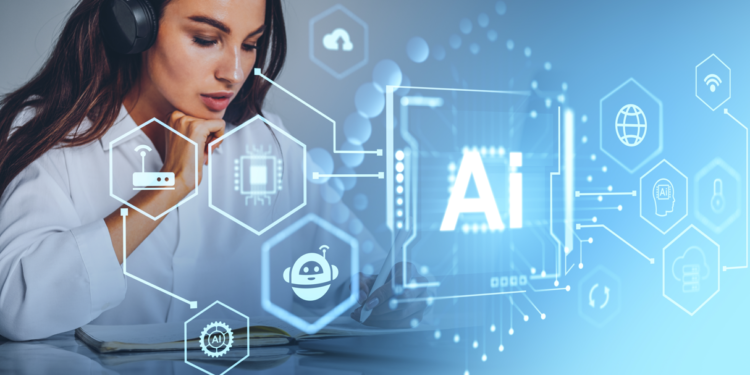The pace at which artificial intelligence (AI) is reshaping the world of work is truly breathtaking. AI’s rapidly evolving capabilities are transforming processes in all kinds of industries, sectors and functions – including, of course, HR and employee benefits.
AI now has the power to offer organisations unprecedented insights into what the workforce truly values. From personalising rewards to predicting wellbeing needs, AI is helping employers move beyond one-size-fits-all packages to strategies that are smarter and more effective.
So how exactly is AI working its magic in the benefits space, and how can employers harness its power while ensuring fairness, security and a human touch remain at the heart of the offering?
Personalisation and workforce insights
The ability of AI to analyse vast datasets is revolutionising how organisations shape their benefits strategies. By identifying patterns in workforce behaviour, AI enables employers to offer benefits that are not only more personalised but also better aligned with employee needs.
“The use and embedding of AI tools within the employee experience creates a huge opportunity for employers to take the personalised experience to the next level,” insists Ian Hodson, director of people and culture at Housing 21.
“Tools that can analyse data to make personal recommendations on the most relevant benefits will not only ensure employees get a tailored offering but also make sure employers get the best return on investments.”
This level of personalisation is becoming a key differentiator for businesses. “Having timely and relevant insights can help inform the key levers that could be pulled to tailor benefits that support particular company strategies,” observes Hayfa Mohdzaini, senior policy and practice adviser for technology at the CIPD.
What’s more, AI’s ability to analyse workforce trends can help to future-proof benefits, according to Charles Cotton, senior policy and practice adviser for pay and reward at the CIPD.
“The employer’s reward team can use AI to analyse employee demographics, engagement levels, staff requests for information, advice and guidance, and past benefit usage to create a better package to meet the needs of today,” he says. “They can also use it to forecast future trends in staff needs, helping to create a better package to meet the needs of tomorrow.”
The machine learning capabilities of AI are also key to this. Steph Hind, co-founder of Heka, explains: “AI, interwoven into modern benefits platforms, moves employers beyond guesswork. Each time a platform user chooses a benefit, AI models within the platform learn more about them in a smart, non-intrusive way.”
In doing so, she explains, the platform can anticipate the future needs of the individual, supplying them with tailored, personalised offerings designed to fit them, their goals, and support their preferences. “The jump in customer experience between traditional and modern platforms is extreme, driving engagement and enabling a culture of support,” she says.
AI in action
AI is already being used by employers to align their benefits strategies with the organisation’s wider goals, offering more than just personalisation. The technology is helping businesses measure the effectiveness of benefits packages, monitor engagement levels and even track industry-wide trends.
“Many organisations are using AI to monitor the employer value proposition, analysing Glassdoor reviews of their company and rivals, and comparing roles, salaries and benefits available at competitor organisations via Indeed or LinkedIn,” says Lewis North, chief technology officer at WorkBuzz.
This ability to cross-reference internal data with external benchmarks ensures that employers remain competitive. Moreover, AI-driven analysis can then help companies fine-tune their offerings.
“We are seeing companies use AI to analyse employee benefits uptake, claims data and employee benefit feedback,” says Ben Warren, head of digital transformation and AI practice at Gallagher. “As a result, benefits professionals can determine which benefits are most valued and adjust packages accordingly.”
AI is also making benefits more accessible to employees, improving communication and engagement.
“AI can act as a sophisticated chatbot, by being on hand to answer any questions an employee has, to direct them to the right resources, such as policy information, or to instruct them on how to select benefits, complete forms or to make claims,” explains Sarah Lardner, director of innovation at Innecto Reward Consulting.
Balancing AI efficiency with human oversight
While AI offers powerful insights, it isn’t infallible. The success of AI-driven benefits strategies depends on the quality of the data being used, Cotton cautions.
“Any AI-driven benefits strategy will depend on the quality of its data. If data is missing or inaccurate then there is a risk that inappropriate decisions are made. This can be managed by checking all data for accuracy before it’s used, as well as identifying any data gaps that might exist and why.”
James Flint, AI practice lead at Securys, stresses the need for strong oversight. He warns: “AI-driven benefits analysis needs a similar governance playbook to any AI system that’s using lots of personal data to inform decisions that affect people’s careers and livelihoods. It is, in other words, a risky endeavour, albeit one with lots of potential upside.”
Being mindful of AI’s weak spots is particularly important when striving for fairness and eliminating bias. For example, without proper oversight, AI can amplify existing inequalities by mistaking them for ordinary trends.
Hallucinations – the term given to AI’s occasional tendency to throw out completely false information – must also be guarded against.
“A critical risk management technique to prevent erroneous conclusions or hallucinations is needed to ensure a human is ultimately responsible for the implementation of any AI-driven recommendation,” insists Jason Andersen, head of product at O.C. Tanner.
It might sound like extra human work is being created through the need to monitor AI, but the technology is delivering added efficiency despite the need for oversight, according to Gethin Nadin, chief innovation officer at Benifex & Zellis.
”At this stage in AI’s evolution, human judgement is still necessary to oversee its output, but even with current capabilities, AI can alleviate approximately 20 percent of the administrative burden for reward and benefit teams,” he explains.
What’s more, it’s important to remember that, used responsibly and correctly, AI can actually help promote fairness and equality rather than put it at risk.
“AI can assist HR and reward professionals to check pay and benefit decisions to see whether there are disparities in outcome by such workforce characteristics as age, gender, and ethnicity,” Cotton explains.
Ultimately, however, employers must ensure that privacy is maintained, data is secure, and that there is full transparency into how AI is being used.
Georgios Michalakidis, group chief technology officer at Perkbox Vivup, also highlights the importance of easing any employee fears over the use of the technology.
“It’s essential that AI is positioned as an employee advocate tool through its decision-aiding capabilities, not as a surveillance or ‘blind automation’ system,” he insists.
What’s next for AI in benefits?
The way employees interact with their benefits is set to evolve, according to Michalakidis. He believes the future will see multi-channel content delivered by AI, ultimately enabling “ubiquitous computing… any location, any format”.
He explains: “Future AI solutions will be able to proactively help with productivity dips and burnout through relevant and timely information, for example quiet hours for neurodivergent employees.”
He also foresees personalisation of websites, portals and apps where content will be “completely tailored to an individual’s needs in terms of the benefits they can access, and support they may need”. This, he says, will “magically appear, save the user time, provide more individual support – to all employees – as well as reduce administrative burden”.
Whatever the developments in AI, there will always be limits, according to John Mullally, group risk & healthcare consultant at Cartwright Employee Rewards.
“We are not, and I do not think we’ll ever be, at the stage where we, at the employee end, can trust AI enough to carry out a role that requires a level of complexity or discretion, such as a claim for an employee,” he insists. “Some things need a human touch.”
Feeling the benefit of AI
While these advancements have the potential to transform employee benefits, their success will depend on how well employers manage ethical risks, bias and transparency. The challenge won’t just be in harnessing AI’s power but in ensuring the technology builds trust and delivers meaningful value to employees.













